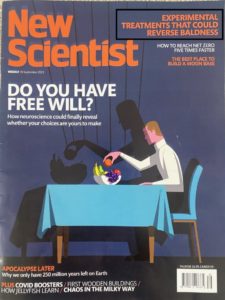 In the latest edition of the New Scientist magazine, released in print on 30th September 2023, HairClone feature in an article titled ‘A hair-raising pursuit’ on reversing balding with new experimental treatments. The article, also published online, was quick to gain attention, becoming a number one trending New Scientist article.
In the latest edition of the New Scientist magazine, released in print on 30th September 2023, HairClone feature in an article titled ‘A hair-raising pursuit’ on reversing balding with new experimental treatments. The article, also published online, was quick to gain attention, becoming a number one trending New Scientist article.
New Scientist magazine is the most popular weekly science and technology publication covering international news from an impartial and scientific standpoint. The magazine was founded in 1956 for a global readership interested in cutting edge scientific discoveries, but has since expanded to include digital editions, videos, podcasts and newsletters.
The article features HairClone’s personalised cell therapy and follicle banking approach as a promising long-term solution to reverse hair miniaturisation and treat androgenic alopecia. HairClone is able to multiply dermal papilla cells from within the hair follicle over a thousand times for injection into miniaturising areas of the scalp.
Although dermal papilla cell injections are not yet clinically available, HairClone is getting close to beginning clinical testing to assess the benefit of this promising treatment.
HairClone’s established follicle banking service allows patients to cryopreserve non-miniaturised hair follicles containing dermal papilla cells that can be used in the hair rejuvenation treatment. Additional cell types are also viably preserved and have potential to treat many other diseases
Banking is the first step of the treatment process and is available at HairClone partner clinics for a one-off banking fee (price dependent on location and surgical technique), plus a nominal yearly storage fee. The service is available in the UK and US, with clinics undergoing training in Central America and Australia and plans to expand the network globally.
HairClone’s treatment intends to rejuvenate existing follicles undergoing miniaturisation, but does not create new thick hairs. The article mentions that there may one day be a way to generate entirely new hair follicles using hairy skin organoids; however, this is a long way off and would be extremely costly. The organoids utilise stem cells to generate hairy skin; a cell type that is preserved using HairClone’s follicle banking service.
Rebuilding miniaturising hairs by replacing the lost dermal papilla cells in the earlier stages of pattern baldness, is a more feasible, widely applicable solution that could help millions.

133 Comments